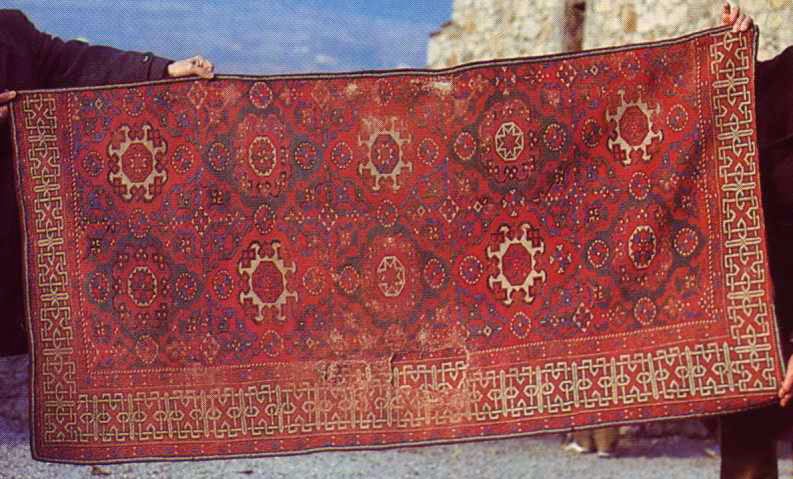|
Small
pattern Holbein carpet fragment, XV century, Ottoman Empire, Western Turkey.
Cathedral of St. Catherine, Sion, Switzerland
104x210cm (3'5"x6'11")
This design is commonly known in the rug literature
as the Small Pattern Holbein. More than 60 examples of the type, many of
them fragments, are known, making this the earliest surviving major group
of rugs.
Mostly woven in the second half of the 15th
century, and perhaps continuing into the early 16th century, the group was
particularly popular in Europe as can be seen in the number shown in
Western paintings, 28 up to the first quarter of the 16th century, and a
further 19 appear in paintings of a later date.
This rug is in a remarkable state of preservation,
complete except for one side border which has been cut off. Part of it has
been used to patch another part of the rug.

Literature: A Discovery at Sion, by Marino and Clara Dall'Oglio (featured
in HALI Issue 27 in 1985)
|

